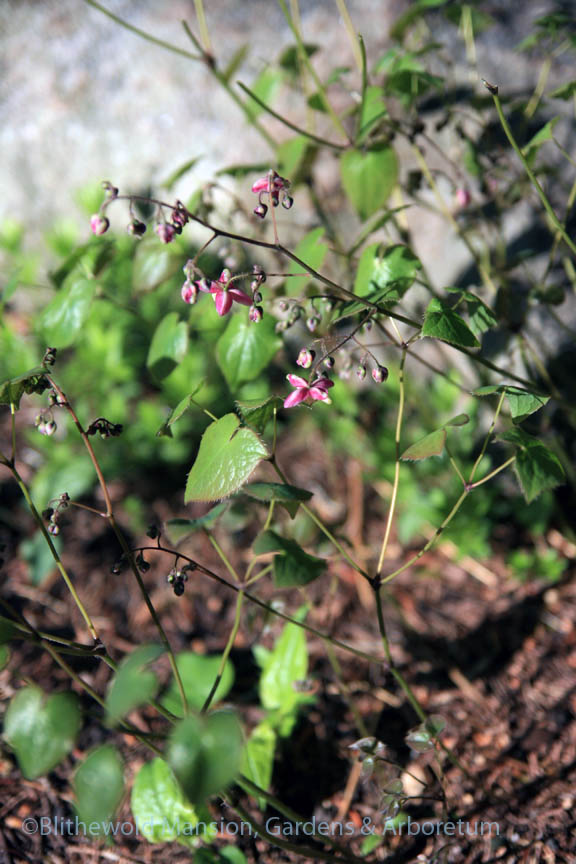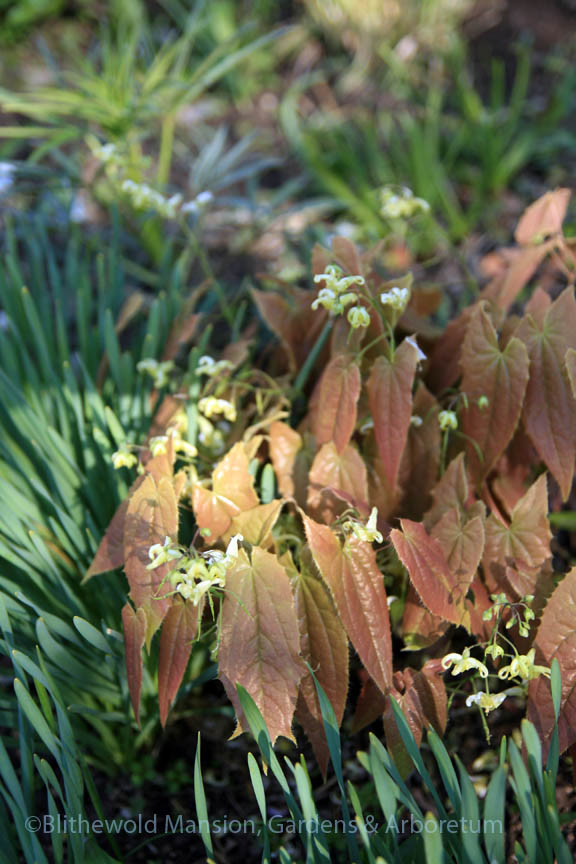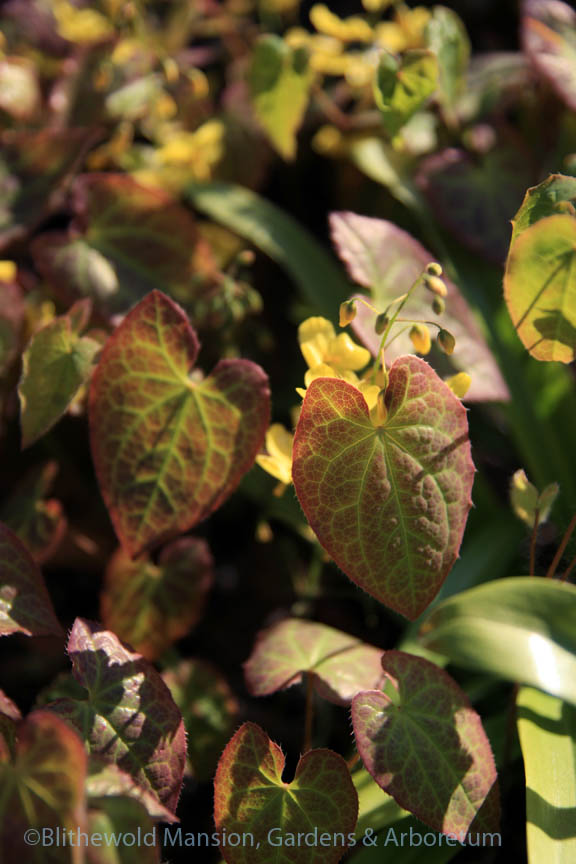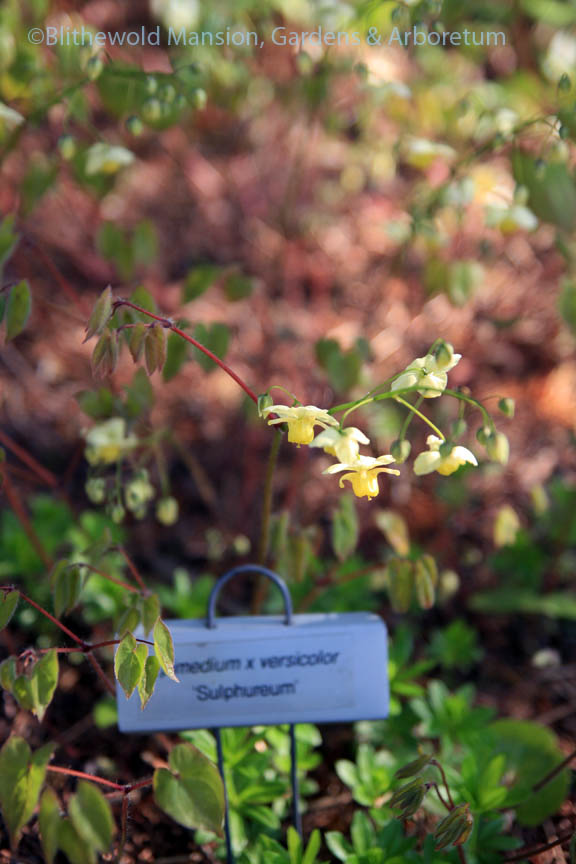Fairy wings
Daffodil Days culminates this coming Sunday with our annual Fairy Festival and we expect all of Blithewold’s fairies to come out for the party. Conditions should be just right. A warm and sunny day is in the forecast and there will be plenty of believers on the property… I’m pretty sure I know where they’ve been hiding lately too. If I was a fairy I’d probably hang out with the daffodils in the Bosquet (they’re still in peak bloom) probably under the open parasols of the mayapple (Podophyllum peltatum) and kicking back on trout lily leaves.
But there’s really no better fairy camouflage than epimedium. Especially now while it displays tiny blooms that look enough like real fairy wings to earn that as one of its common names. — Or is it the leaves that look like fairies’ wings because, come to think of it, to me the flowers look more like court jester hats. But then the leaves look more like hearts… Maybe on Sunday, when we get a better look at the fairies, we’ll be able to tell what’s what.
In any case, anyone who wants to attract fairies to their garden should definitely consider planting epimedium. And even if you’re allergic to fairy stings, you might fall for epimedium just because it’s one of the prettiest groundcovers of all time for shade. Our biggest colonies are planted in the Rock Garden and just outside the Rose Garden moongate, in a bed we refer to as the “dry shade bed”. The ground under the Pagoda tree (Sophora japonica) is dry and compacted but these dainty and delicate looking plants have been perfectly happy to spread their wings (so to speak — rhizomes, actually) over the last few years to fill in where not much else wants to. They’re a whole lot tougher than they look. If you’re not already a fan, here’s another point in their favor: most are practically evergreen and need no more attention than a once-a-year haircut in late winter/early spring to make way for these spectacular (and sometimes speckled) new leaves and adorable flowers. And if you are already a fan, you know that planting one leads down a slippery slope to craving a whole collection. (There are about 40 species and who knows — I certainly don’t — how many cultivars.) Rarity though, is another point in their favor — despite their willingness to spread, they are not always easy to divide, which makes them a little bit precious and sometimes hard to find to buy. (Our favorite local source is Avant Gardens.)
Do you have fairies or fairy wings in your garden? Any favorites?





